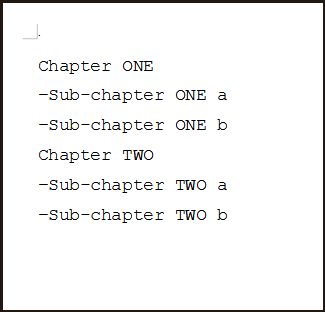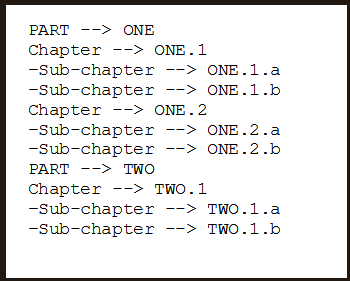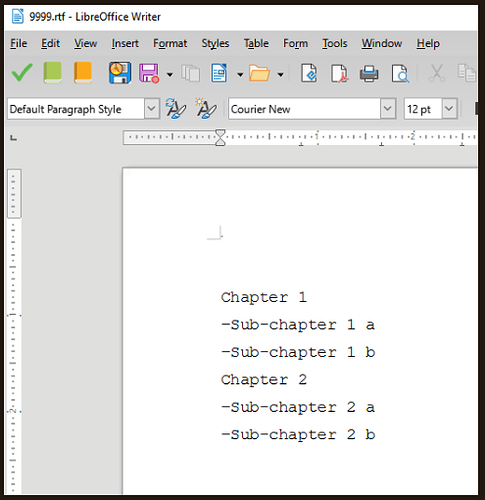And perhaps I might as well add:
I don’t personally use those as I rather write novels, but for the few occasions where I used it to number sub-chapter divisions, I did so manually, using strings.
So that to say that if it refuses to work with everything set right, that could be a solution.
You use a string of <$n> (or <$W>) for the main numbering, and a different string for sub numbers that you reset in the layout of the main sections. (In your case likely just <$l> will do, for the subchapters, as it is already a string of its own.)
Chapter <$n:main> <$rst_l>
–Sub-chapter <$n#main> <$l>
–Sub-chapter <$n#main> <$l>
Chapter <$n:main> <$rst_l>
–Sub-chapter <$n#main> <$l>
–Sub-chapter <$n#main> <$l>
→ Note the different $n: vs $n#
Compiled using this time <$W>

. . . . . . . . . . . . .
PART → <$W:part>
Chapter → <$W#part>.<$n:main> <$rst_l>
–Sub-chapter → <$W#part>.<$n#main>.<$l>
–Sub-chapter → <$W#part>.<$n#main>.<$l>
Chapter → <$W#part>.<$n:main> <$rst_l>
–Sub-chapter → <$W#part>.<$n#main>.<$l>
–Sub-chapter → <$W#part>.<$n#main>.<$l>
PART → <$W:part> <$rst><$n:main>
Chapter → <$W#part>.<$n:main> <$rst_l>
–Sub-chapter → <$W#part>.<$n#main>.<$l>
–Sub-chapter → <$W#part>.<$n#main>.<$l>

(Lucky you, you are on a Mac, because the reset of a string doesn’t seem to currently work under Windows. I had to tweak that above screenshot afterwards (for the $n:main value of Part TWO).)
. . . . . . . . . . . . .
Or perhaps <$sl> –lowercase L, not uppercase i – (what would be the equivalent of <$sn>, but unlisted in the placeholders list) would work too. (?) ← I haven’t tried it. I’m not even sure it’ll be recognized.
In which case perhaps it’d even force you to use “l” for both. Which is no better.


